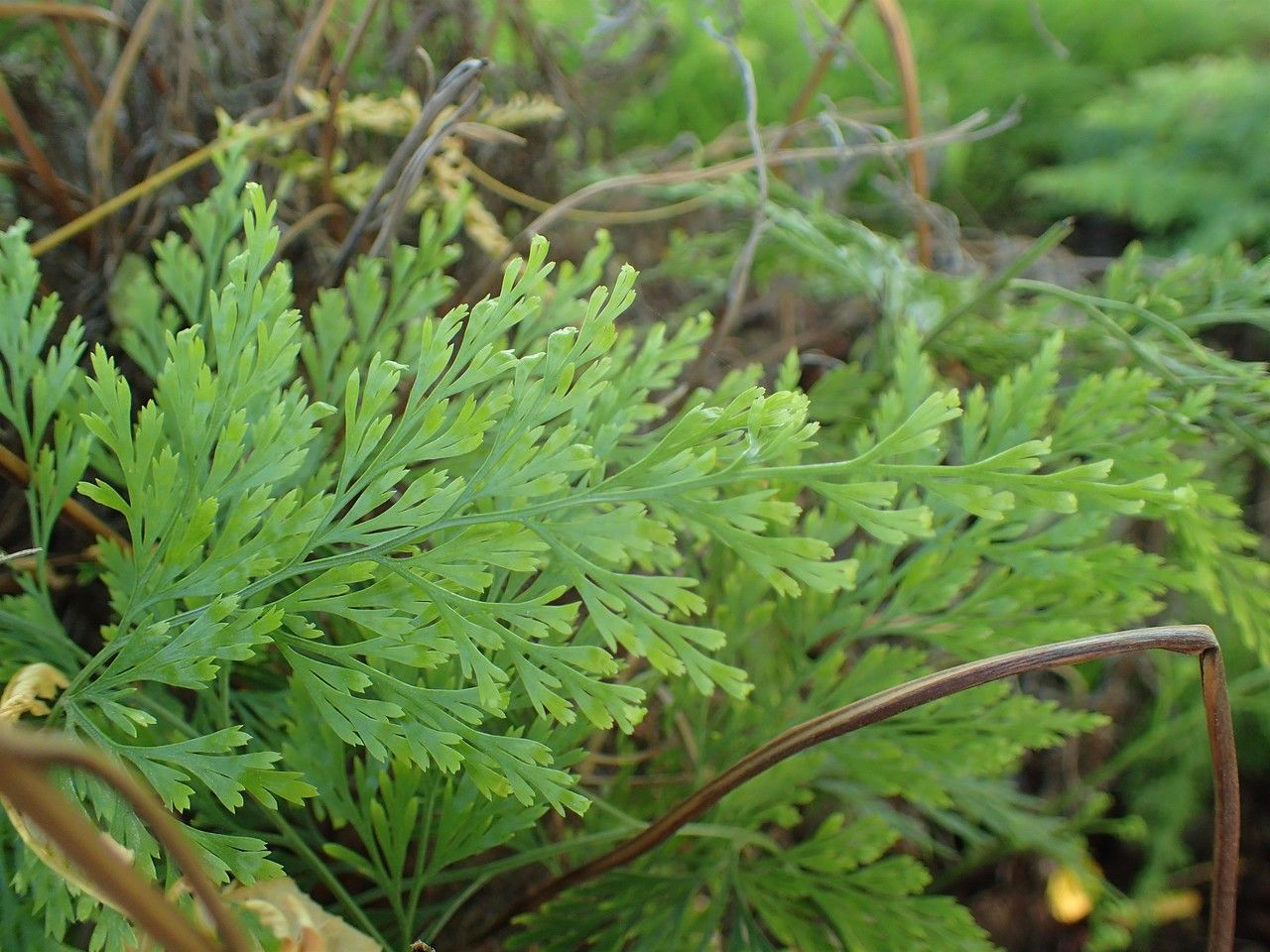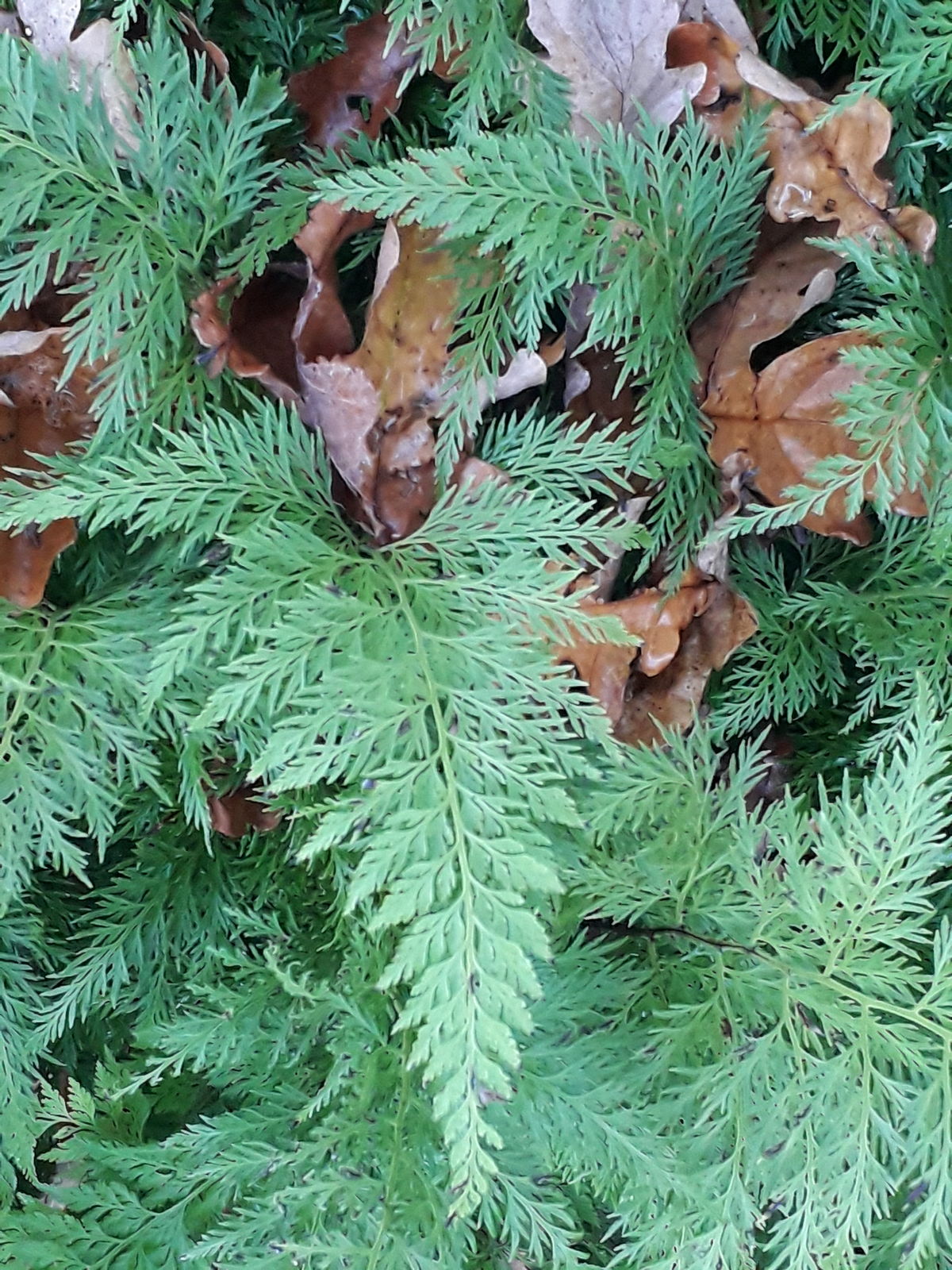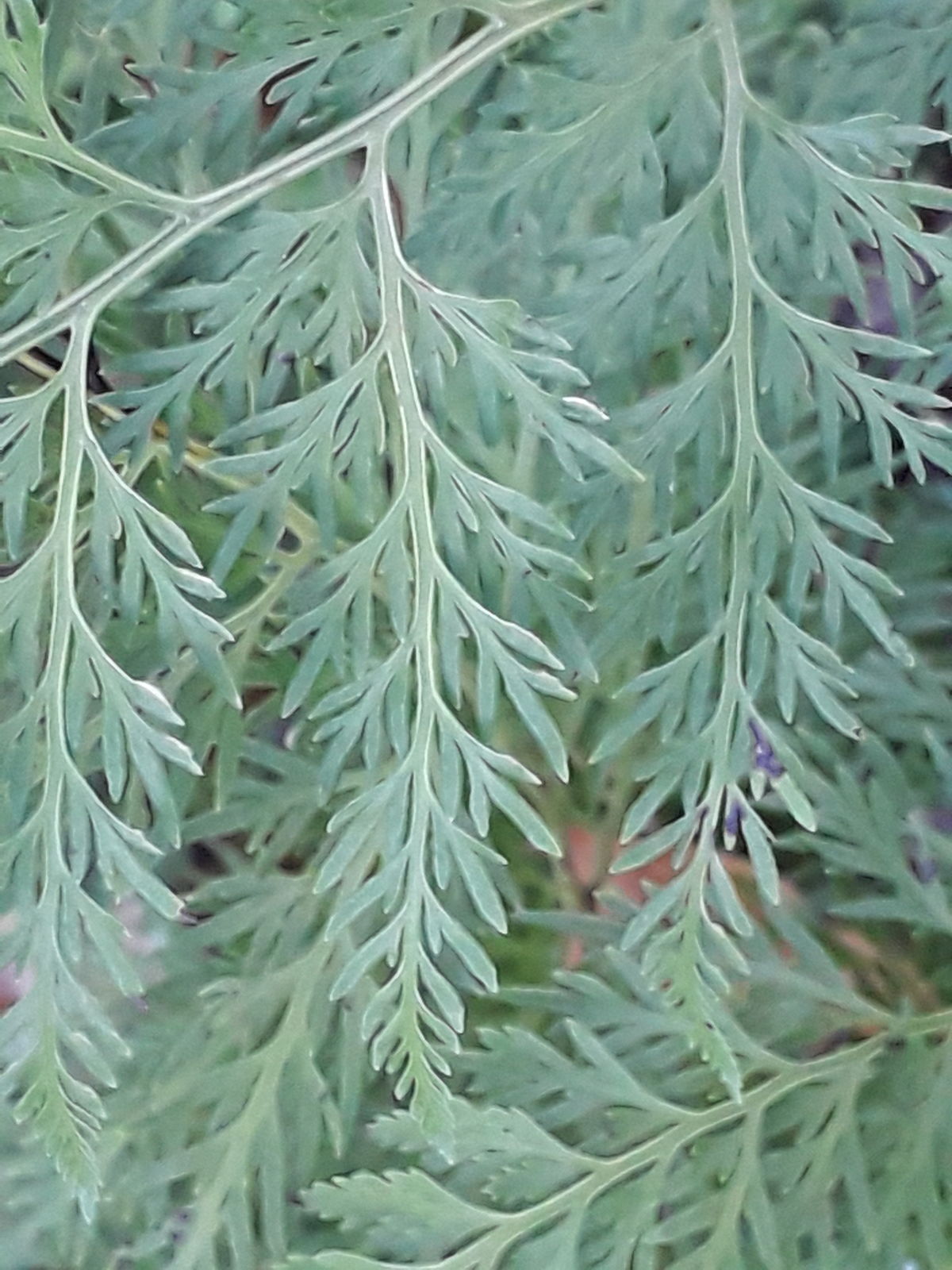Japanese Fern
onychium japonicum
Also known as: ["Japanese Fern","Japanese Hairy Fern"]
Overview
A delicate, evergreen fern with feathery fronds, native to East Asia.
Benefits & Perks
["shade tolerant","aesthetic foliage","wildlife attractant (bees, butterflies, birds)"]
Botanical Classification
| Phylum: | Tracheophyta |
| Class: | Polypodiopsida |
| Order: | Pteridales |
| Family: | Pteridaceae |
| Genus: | Onychium |
| Botanical Name: | Onychium japonicum |
Plant Characteristics
Basic Information
- Category: Leaf Plants
- Suitable Location: shaded garden bed or container in a protected spot
- Suitable For:
- Is Weed: No
- Allergenicity: low
Environmental Needs
- Climate: {"temperatureRange":"5–30°C"}
- Hardiness: {"zones":"8–11"}
- Misting: every 2–3 days in dry climates, less often in humid environments
- Drainage: Fast-draining to prevent waterlogging.
- Soil Type: Well-draining, rich in organic matter; mix of peat, loam, and sand or perlite.
Maintenance Level
- Maintenance Level: moderate
- Toughness Level: moderate
- Pruning Frequency: As needed, typically every 2–3 months or after flowering.
- Pruning Intensity: Light to moderate; avoid heavy pruning unless necessary.
Care Details
Ideal Sunlight Coverage:
Bright indirect light for 6–8 hours daily; tolerate partial shade, especially in hot climates.
Sunlight Tolerance Tips:
Acclimate gradually to brighter light; protect from direct sun to prevent scorching; adjust indoor placement based on light intensity.
Care Requirements
Care Difficulty
easymoderate
Sunlight
partial shade to full shade
Rotate plant for even growth; use sheer curtains to filter intense light; avoid sudden light changes.
Watering
every 7–10 days during active growth, reduce in winter
Maintain consistent moisture without waterlogging; water early in the day to allow foliage to dry.
Soil
well-draining, humus-rich soil
pH: Slightly acidic to neutral (pH 5.5–7.0).
Use a mix that retains moisture yet drains well; avoid heavy clay soils.
Temperature
Prefers 60–75°F (15–24°C); cooler temperatures in winter promote dormancy.
Avoid sudden temperature shifts; protect from frost; maintain stable indoor temps.
Fertilizing
every 4–6 weeks during growing season, none in winter
Apply fertilizer after watering to prevent root burn; flush soil occasionally to prevent salt buildup.
Propagation
Methods
Stem cuttings or division; stem cuttings are more common for home growers.
Step-by-Step Propagation Guide
- Take a 4–6 inch cutting, remove lower leaves, dip in hormone (optional), plant in medium, maintain humidity.
Best Time: Spring or early summer when the plant is actively growing.
Environment
High humidity (70–80%), indirect light, and warm temperatures (65–75°F).
Medium
Well-draining mix of peat, perlite, and sand; can also root in water initially.
Hormone
Optional but recommended for faster rooting.
Timeline
Roots develop in 3–6 weeks; new growth appears in 2–3 months.
Tools Needed
Pruning shears, rooting hormone, small pots, misting spray bottle.
Quick Tips
Use healthy parent plants, maintain consistent moisture, avoid direct sun during rooting.
Pruning & Repotting
Pruning Guide
Method
Snip individual fronds at the base; trim back overgrown stems to encourage bushiness.
Pruning Plan
Remove dead or damaged foliage to encourage new growth and maintain shape.
Tools
Clean pruning shears or scissors, gloves.
Checklist
Sanitize tools, remove dead/damaged parts, shape as desired, clean up debris.
Repotting Guide
Best Season
Spring, before the active growing season begins.
Pot Size
Choose a pot 1–2 inches larger in diameter than the current one.
Method
Remove plant gently, trim roots if needed, place in new pot with fresh soil, water lightly.
Suggestions
Repot every 2–3 years or when roots outgrow the pot; beneficial for soil refreshment.
Checklist
Check root bound status, prepare new pot, trim roots, use fresh soil, water lightly.
Advanced Care Tips
Watering Mastery
Watering Checklist
Check soil moisture, water thoroughly, ensure drainage, adjust for season.
How to Apply Water Properly
Water deeply at the root zone until water drains from the bottom; ensure excess water exits the pot to avoid stagnant moisture.
Watering Schedule Tips
Water thoroughly when the top inch of soil feels dry; reduce frequency in winter to prevent root rot.
Soil Improvement
Add perlite or sand for drainage; incorporate compost for fertility; ensure aeration with organic matter.
Temperature Stress Management
Signs of Temperature Issues
Yellowing leaves (cold stress), wilting or brown leaf tips (heat stress), stunted growth.
Cold Stress
Slows growth, causes leaf discoloration, and may lead to root damage in prolonged cold.
Solution: Move to a warmer location, insulate pots, avoid cold drafts, and reduce watering.
Hot Stress
Leaves may scorch, wilt, or drop; growth may cease in extreme heat.
Solution: Provide shade, increase humidity, water more frequently, and ensure good air circulation.
Fertilizing Guide
Fertilizing Checklist
Check season, dilute fertilizer, water before feeding, stop in dormancy.
Fertilizing Method
Use balanced liquid fertilizer diluted to half strength every 4–6 weeks during growing season; avoid fertilizing in winter.
Common Problems & Solutions
Toxicity Warning
Cats
Slightly ToxicCats that ingest Onychium japonicum may experience mild gastrointestinal irritation. The plant poses a low risk but can cause mild symptoms.
⚠️ Symptoms:
🌿 Toxic Parts:
⚡ Toxic If:
if eaten
Dogs
Slightly ToxicIngestion of Onychium japonicum by dogs may result in mild gastrointestinal upset. The plant is not considered highly toxic but can cause discomfort.
⚠️ Symptoms:
🌿 Toxic Parts:
⚡ Toxic If:
if eaten
Humans
Slightly ToxicOnychium japonicum contains compounds that can cause mild gastrointestinal distress when ingested. The plant's effects are generally not life-threatening but can lead to discomfort.
⚠️ Symptoms:
🌿 Toxic Parts:
⚡ Toxic If:
if eaten
Frequently Asked Questions
Q: How often should I water Onychium japonicum?
A: Water when the top inch of soil feels dry, ensuring consistent moisture but not waterlogging.
Q: Does this fern require direct sunlight?
A: No, it prefers partial shade or indirect light.
Q: Is Onychium japonicum safe for pets?
A: Yes, it is non-toxic to dogs and cats.
Quick Reference
| Family: | Pteridaceae |
| Care: | easy |
| Light: | partial shade to full shade |
| Water: | every 7–10 days during activ |
Get Expert Care Tips
Download the Plantious app for personalized care reminders and plant identification!
Google Play App Store








